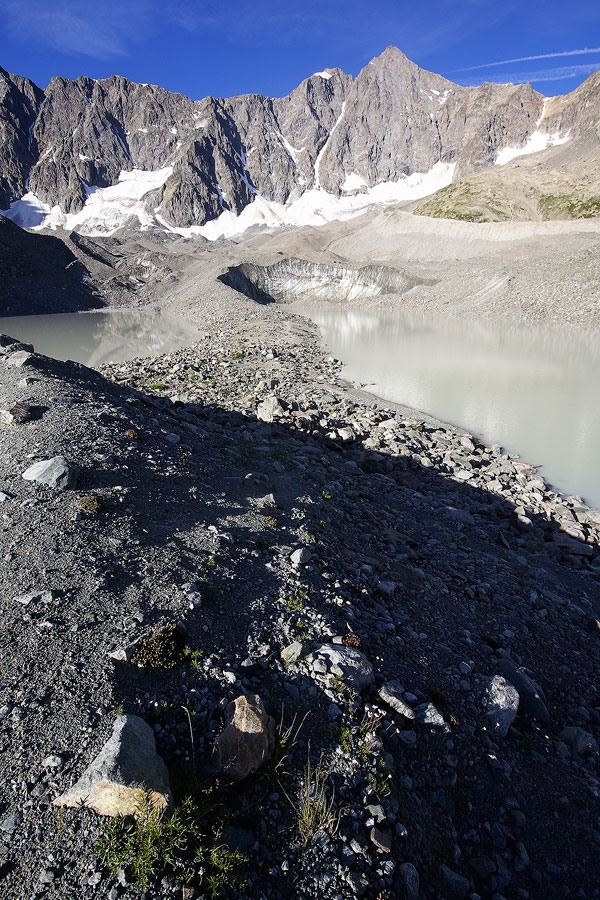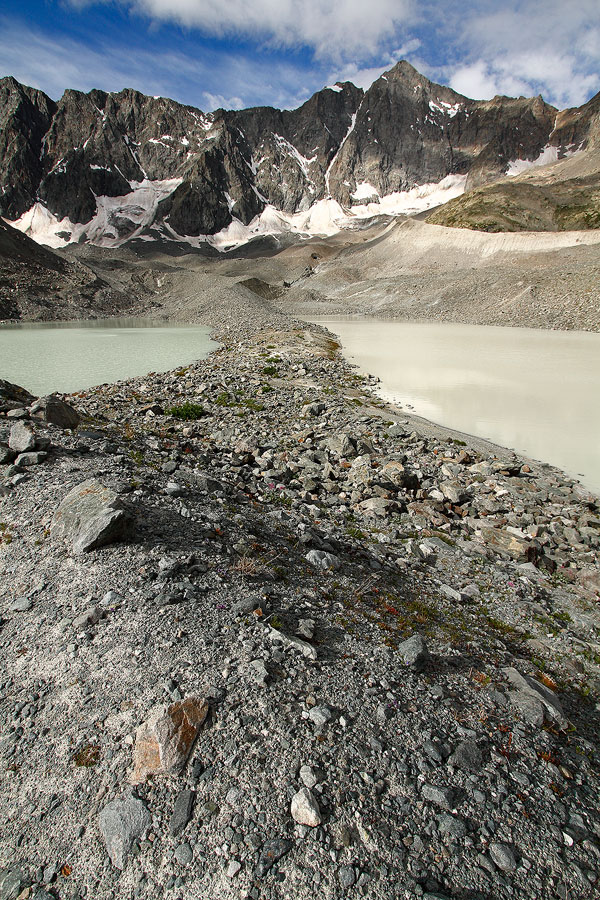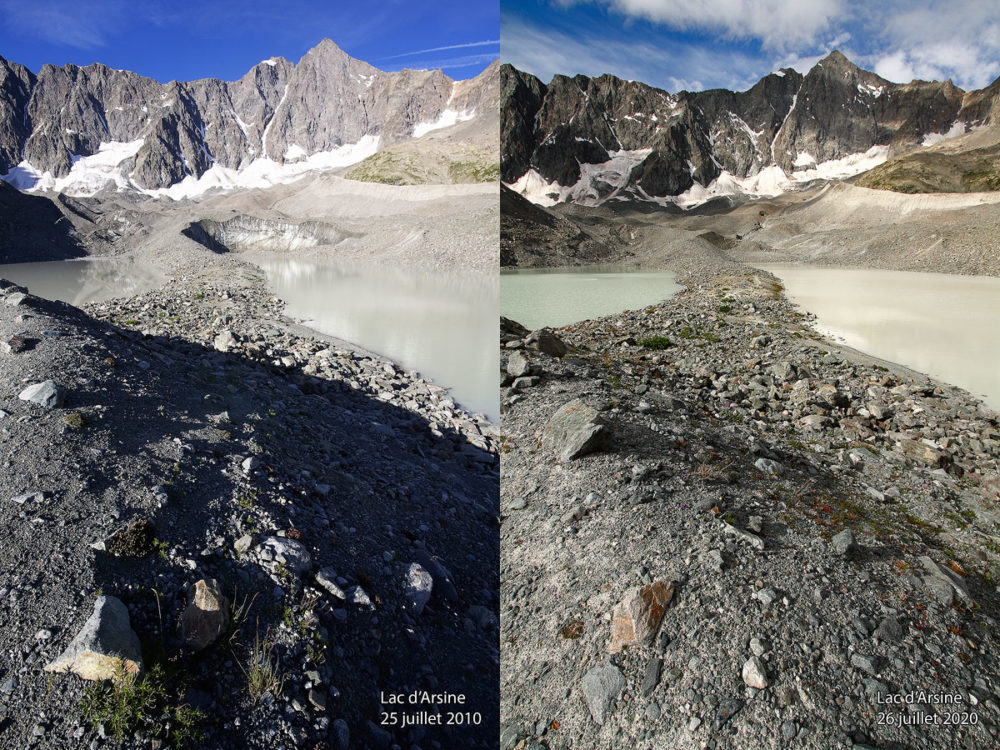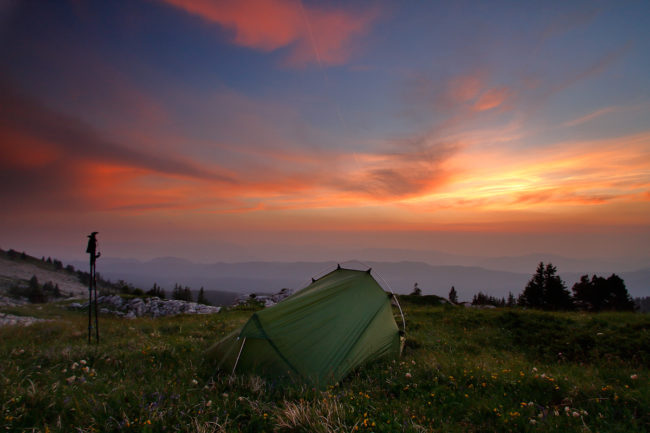Blog
After making the comparison last year with the Quirlies glacier 5 years apart, I thought I could do the same with the Arsine glacier this year for the 10 years of my first bivouac in the area.
So here is the Before / After of the Lake and the Arsine Glacier at 10 years, 1 day, 1 hour, 14 minutes and 45 seconds. Si, si!
Well, I tried to find the same pebbles in the foreground but, as I naively thought that pebbles were inert things, it’s not that simple. In 10 years they’ve had time to move! Having said that, if you look carefully towards the centre of the picture, there are some who have remained faithful to the position.
Unsurprisingly, some of the ice has gone. I remembered very well the large wall of ice that almost threw into the water at the bottom of the lake. When I arrived, I immediately saw that it had shrunk. If you compare the photos, you can see that it has almost disappeared. It was as if bulldozers had come and bulldozed the land in anticipation of some infamous construction.
Since most of the glacier is covered with rocks, we don’t notice too many other differences. There’s still a big hole in the ice where a stream of water comes out that didn’t exist 10 years ago. The upper part, where the white snow is visible, doesn’t seem to have changed much. The patches of snow perched in the mountain are more important this year. The melting was obviously more advanced in July 2010 than this year since we haven’t really had a lot of heat yet. But don’t worry, the heat wave is coming. It’s just a bit late this year.
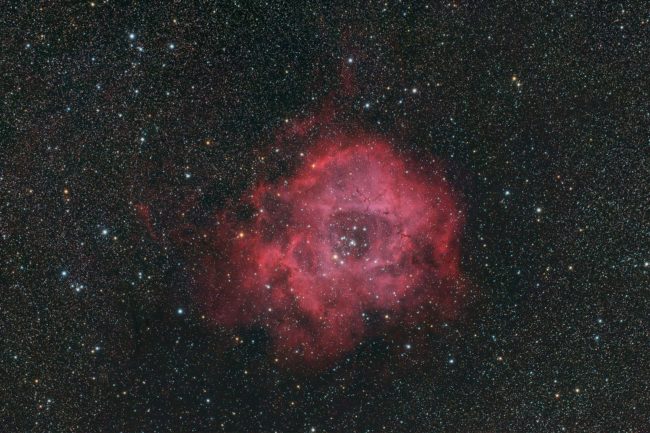
The Rosette Nebula, registred under the number Calwell 49, is an H-II region in the constellation Unicorn. As it is not a very well-known or easily identifiable constellation, so we start from Orion to locate it. It is east of Orion, in the extension of the line formed by Meissa (Lambda Orionis) and Betelgeuse. There are several entries from the NGC catalog:
- NGC 2237: the western part
- NGC 2238: another part of the nebula
- NGC 2244 (= NGC 2239): the cluster open in the center
- NGC 2246: another Rosette emission region
112 x 1 min
Camera : Nikon Z6 partially unfiltered
Telescope : Takahashi FSQ-106ED refractor.
Mount : Takahashi EM-200 homemade electronics.
Guiding : ZWO ASI290MM Mini on QHY OAG-M
Temperature : 2°C
Humidity : 68%
SQM : 21
Software : auto-guiding with PHD2, acquisition with Astro Photography Tool, processing with PixInsight.
Location : Le Plan, Col du Banchet
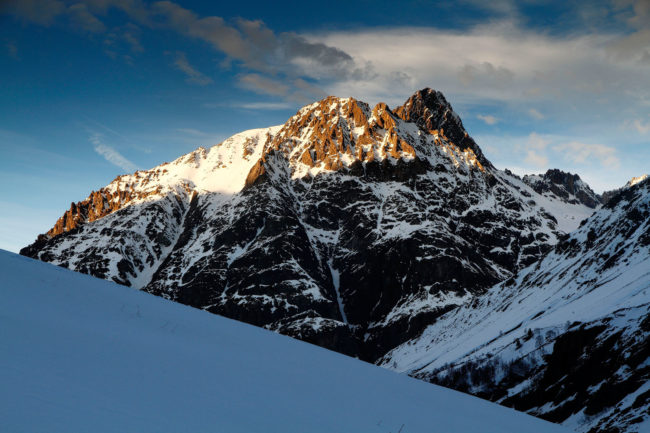
We are between 1700 and 3500m above sea level and there is very little snow. It is mild. The landscape is very textured between the roughness of the rock and the snow clinging to it desperately.
Aiguille du Plat de la Selle. Ecrins National Park.
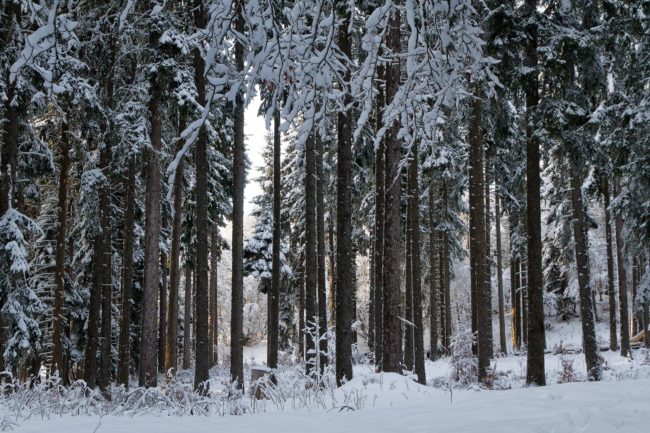
A photo of January just after a snowfall. The layer was not very thick for a January month. Less than 5cm at 1200m altitude. And some areas under the trees are almost virgin. It is at 1450m that there are enough to completely cover the ground. Before that, the last serious snowfall was in November. The mild December month had melted everything below 2000m altitude. In 10 years, the snow at these altitudes will probably only be a memory.
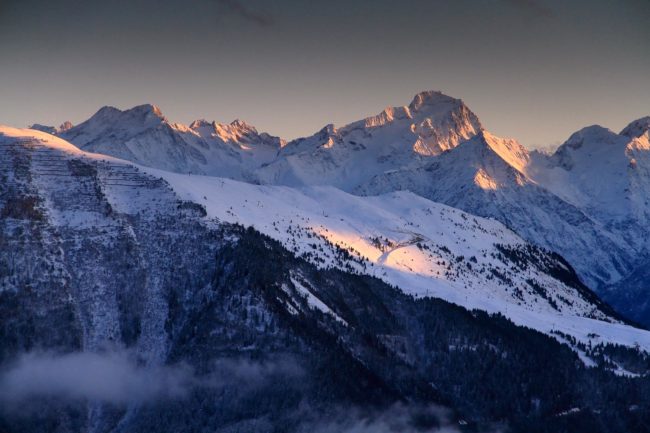
Saturday afternoon I went to see the first snows above Allemond. Wintery atmosphere at the top where I got a little frozen feet to enjoy the shades of the sunset.
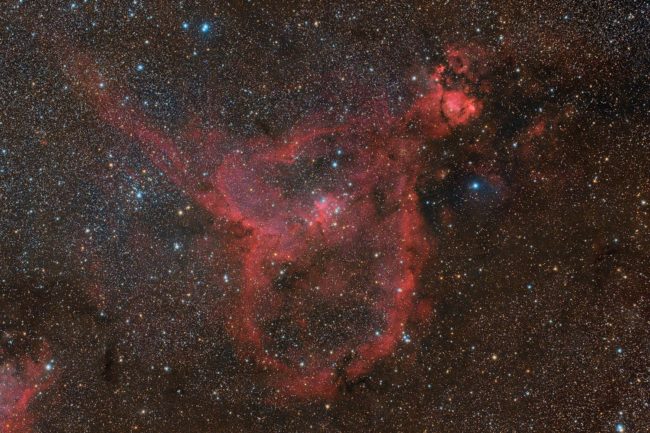
Another typical nebula of late summer. The Heart Nebula is a region HII neighbor of the Soul Nebula. In the sky, it is located in Cassiopeia, at the end of the tip of Perseus. In the galaxy, she is in the arms of Perseus, 7500 light years from us.
93 x 1min
Camera : Nikon Z6 partially unfiltered
Telescope : Takahashi FSQ-106ED refractor.
Mount : Takahashi EM-200 homemade electronics.
Guiding : ZWO ASI290MM Mini on QHY OAG-M
Temperature : 12 to 10°C
Humidity : 70% to 84%
SQM : 21.6
Software : auto-guiding with PHD2, acquisition with Astro Photography Tool, processing with PixInsight.
Location : L’Epine, Hautes-Alpes, France
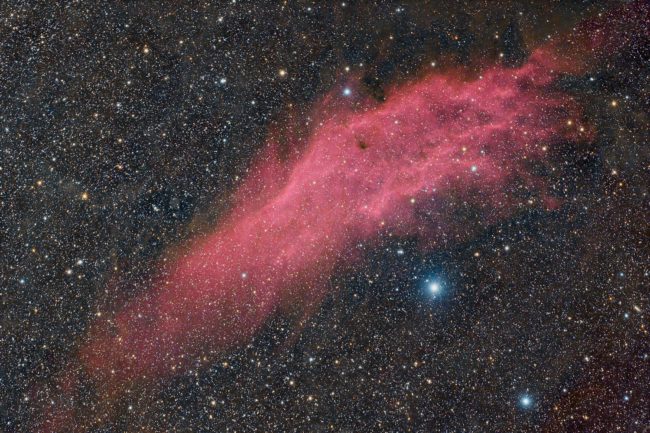
Yet another HII region, in Perseus this time. An emission nebula, therefore, the famous ionized hydrogen. Its name comes from its resemblance to the American state. It is 70 light-years long and is 1500 light-years away from us, making it the closest HII region to the solar system.
It’s not an easy to catch object since its best period for photograph it is the rainy season, the autumn, the month of November or December. I did it on September 3rd from 2am and it was still low on the horizon. So I kept only 80 of the 100 exposures I made.
80 exposures of 1 minutes
Camera : Nikon Z6 partially unfiltered
Telescope : Takahashi FSQ-106ED refractor.
Mount : Takahashi EM-200 homemade electronics.
Guiding : ZWO ASI290MM Mini on QHY OAG-M
Temperature : 8°C
Humidity : 85% to 95%
SQM : 21.6
Software : auto-guiding with PHD2, acquisition with Astro Photography Tool, processing with PixInsight.
Location : L’Epine, Hautes-Alpes, France
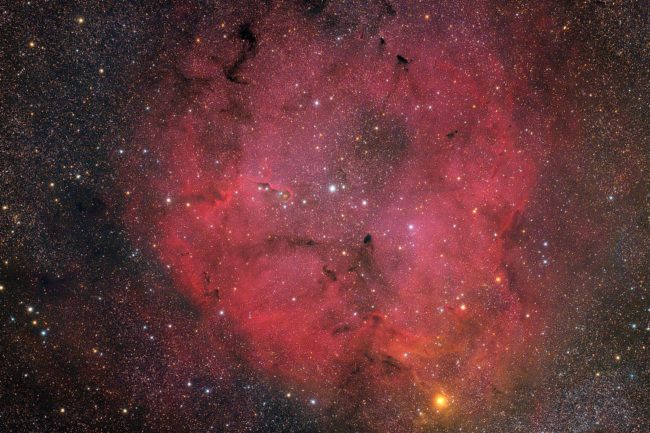
C’est une region HII assez connue dans Céphée, une region d’hydrogène ionisé. IC 1396 désigne un amas ouvert d’étoile composé des quelques étoiles brillantes au centre de la grande nébuleuse rouge. La Trompe d’Elephant est une zone sombre dans la nébuleuse au centre et un peu a gauche de l’image qui ressemble vaguement au membre du pachyderme. Son matricule officiel est IC 1396A.
Enfin, mon Nikon Z6 est opérationnel sur le ciel profond. Je lui ai retiré son filtre IR-Cut qui permet d’ajuster la balance des blancs pour de la photo “normal”. Ce défiltrage m’a donné du fils a retordre. Il a deux filtres : un bleu-vert qui filtre les infrarouges et une bonne partie du rouge visible dont la longueur d’onde de l’hydrogène ionisé H-Alpha et un filtre anti-poussière. Une fois ces filtres retiré, je me retrouve avec une grosse entrée de lumière interne sur la capteur. J’ai du me résoudre à un défiltrage partiel en remettant le filtre anti-poussière. Heureusement le démontage du boitier et relativement facile.
Côté sensibilité, je ne suis pas déçu. Le temps de pose de lui même puisque j’ai fait des pose de 1 minutes alors qu’il aurais fallu des poses de 10 minutes avec mon ancien Canon EOS 1000D. Plus on fait de poses plus on réduit le bruit. J’en ai donc fait 80 et ça n’a pris que la moitié de la nuit !
80 poses de 1 minutes
Nikon Z6 défiltré partiel
Lunette Takahashi FSQ-106ED.
Monture Takahashi EM-200 électronique fait maison.
Guiding : ZWO ASI290MM Mini on QHY OAG-M
Température : 10°C
Humidité : 80% à 84%
SQM : 21.6
Logiciels : auto-guidage avec PHD2, acquisitions avec Astro Photography Tool, traitement avec PixInsight.
Site : L’Epine, Hautes-Alpes, France
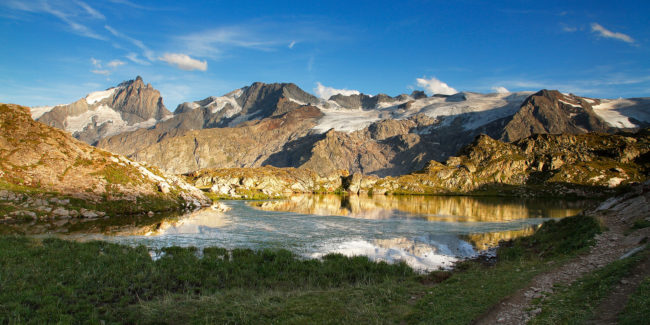
Finally, it’s not that bad, this lake!
It is surrounded by rocks except the north shore which is trampled by cows. Interesting points of view are not easy to find.


